The Who is Losing Learning Coalition has raised urgent questions about both school exclusion and attendance. Their report, Who is Losing Learning? The case for reducing exclusions across mainstream schools, drew attention to the wide-ranging forms of educational exclusion affecting far too many school students in England today. From formal exclusions to inadequate provision for additional needs to less easily categorised problems such as educational alienation, the exclusions continuum described in the report makes clear the various gradations of exclusion experienced by students who are too often set on a one-way path of escalating educational marginalisation.
Debates about these pressing national problems can be polarised. This was exemplified by the furore that erupted last summer following the publication of an Observer piece on behavioural policies. The tension within these debates is exacerbated, of course, by the social media platforms on which they often play out. But it’s also fuelled on a more fundamental level by how difficult it is to work in education today: toxic stress is reverberating around staff teams in our schools and within adjacent services.
One of the least helpful features of discussion around educational exclusion is the tendency towards situating ‘The Problem’ and ‘The Answer’ within one domain. To simplify, this can consist of arguments along the lines of:
- "Some schools just have an exclusionary culture" (blame the schools)
- “The education system incentivises exclusion – the DfE/Ofsted effectively encourage it” (blame the system)
- "All the services around schools are crumbling, so what are they meant to do?" (blame services)
- “Societal problems like poverty and mental health crises are deepening, so obviously exclusions will get worse"(blame society)
All of these statements may contain elements of truth, but by themselves place inordinate focus and responsibility on one side of a complex problem. Simplistic school blame, society blame, services blame or system blame is not a fruitful starting point for progress. (Of course, there’s also straightforward 'student blame', but even then, there’s usually some awareness that at least one of those other four Ss play a role of some form.)
In reality, I think that everyone working in and around schools – ranging from arch abolitionists pushing for zero exclusions, to the most tentative reformers – can recognise that all four domains are consequential, and that they are interwoven. None of the four should be 'let off the hook', but neither should any one side be seen to contain either 'The Problem' or 'The Answer'.
One reason for the levels of stress within education today is the compounding effects of factors across all four domains, which undermine staff wellbeing as well as educational inclusion. Growing destitution across the country combined with ongoing austerity, for instance, leaves all those working with children and young people facing acute challenges. The housing crisis can have pernicious effects on both students and school staff.
The ‘four-sided’ approach doesn't mean everything is equally important, nor that people can't make strong arguments as to what are the most urgent issues to address. In my view, we’ll only be tinkering around the edges unless we address some fundamental problems across the four domains. We have a ludicrously unequal society; endemic racism; woefully inadequate SEND provision; a dearth of relational practice in too many schools; and (relatedly) ridiculous teacher workloads in too many cases. Others may believe that less substantial or different forms of change are needed, but as a ‘minimum requirement’ for any meaningful progress on educational exclusion, we must talk about change across these four domains.
This approach also entails valuing a variety of voices from both within and beyond schools when considering how best to make progress on educational inclusion. Alongside teachers, school leaders, students and parents, we should be listening to family support workers, early years professionals, social workers, youth workers, educational psychologists, speech and language therapists, CAMHS professionals, and more.
The four-sided approach encourages recognition that a range of factors across the four domains play a substantial role in driving – and therefore potentially reducing – educational exclusion. Our best hopes for making British education more inclusive lie in broadening our lens and getting more ambitious about changing our schools, our education system, our services for children and young people, and our society.
Luke Billingham is a youth worker at Hackney Quest and a Research Associate at the Open University, as well as an Honorary Research Fellow at Durham University. In 2022 he co-authored the book Against Youth Violence

